Trees for bees
The pollen and nectar sources available to bees depend upon the time of the year and the area of the country. The bees will enthusiastically exploit what’s available, but will struggle if there’s a dearth of either.
For much of this year I’ve been living on the remote west coast of Scotland, in an area with a very low population density and an even lower density of beekeepers … by my calculations less than 1 per 25 km2.
It’s very different from Fife (on the east coast of Scotland). It’s warmer and wetter here and there is almost no arable farming. One or two of the crofts on the coast might grow a bit of barley or wheat, but the few fields tend to be used for grazing and hay production. There’s probably no oil seed rape within 50 miles.
And there’s also no Varroa 🙂 … but I’ll discuss that another time.
It goes without saying, since I’m spending so much time here, I now have bees here 🙂
Triffids and mad honey
The primary nectar source for honey is heather, which doesn’t yield until August. I have less than zero experience with heather honey – other than on toast – so have a lot to learn.
The land is on the edge of moorland with a mix of larch and scots pine, with a shrubby understorey of birch and some rowan. It’s awash with wildlife; pine marten, eagles, crossbills and the elusive Scottish wildcat {{1}}.
However, at least until a year or two ago, much of the land was covered in a triffid-like invasive mass of rhododendron. Swathes of the west of Scotland and Ireland are blighted by this shrub which was first introduced as an ornamental plant in the 18th Century.
I’m biased, but I’d argue that rhododendron has no redeeming features. It seeds itself everywhere and smothers all other groundcover, leaving a near sterile environment. It’s terrible for wildlife. The flowers are briefly showy but not hugely attractive, either to me or to bees – whether wild or managed.
Oh yes, and the nectar produces hallucinogenic honey. I’ve even less experience of this than I do of heather honey … but in this case I have no desire to learn more.
So, I’ve been slowly clearing the rhododendron and replanting the cleared areas.
Trees for Life
A friend who used to keep bees in this are a few years ago commented that there was a shortage of early season pollen, meaning that colonies could sometimes struggle to build up. A colony that fails to build up well early in the season will struggle to reproduce i.e. swarm.
Of course, like most beekeepers, I don’t really want my bees to swarm.
However, I do want my colonies to be strong enough to want to swarm. That way, there will be loads of foragers to exploit the heather from late July. In addition, I’m particularly interested in queen rearing and building my stocks up, and for both these activities I need the colonies to have good access to pollen and nectar … and to be big and strong.
With no agriculture to speak of there are also no pesticides. Perhaps as a consequence of this there are a very large number of bumble bees about. These give me hope that there might actually be sufficient pollen, but more can only be beneficial.
And more will certainly be helpful if I end up with a reasonable number of colonies that could compete with the native bees for environmental resources {{2}}.
I’m therefore busy planting trees in some of the areas cleared of rhododendron. Not quite on the same scale as the Trees for Life rewilding at Dundreggan, but every little bit helps 😉
Why trees?
Partly because they’ll take the longest to grow, so need to go in first, and partly because many of them are excellent sources of early season pollen and nectar.
It’s also the sort of epic-scale ‘gardening’ involving chainsaws and brushcutters, huge bonfires, cubic metres of firewood and lots of digging that I have an affinity for. I don’t have the patience for pricking-out and growing on bedding plants, or weeding the herbaceous border 😉
Native trees
I’m keen to re-plant with native trees and shrubs. I know they’ll do well in this environment and they can be readily sourced, either locally or at little expense.
As will become clear shortly, the ‘expense’ part is a not an insignificant consideration with the grazing pressure from deer in this area.
I’ve initially focused on just six species; alder, hazel, wild cherry (gean), poplar, willow and blackthorn.
Of these I’ll skip over the blackthorn (Prunus spinosa). Although the white spring flowers produce nectar, I chose it to make a spiky hedge and for the distant opportunity of making sloe gin. However, I’m going to have to try again as the bareroot whips I planted last winter have done almost nothing.
Alder
Alder (Alnus glutinosa) produces large amounts of early season pollen. It also thrives in damp ground and we have plenty of that. I’ve planted quite a bit of alder and it’s all doing pretty well. There is already a lot along the banks of nearby streams and in boggy areas at the side of the loch, so I know it will do well in this area. In fact, the few dozen I’ve planted are insignificant in comparison to what’s growing locally, but I wanted to create an area of mixed alder and willow carr {{3}}. I planted 30 cm bareroot whips last winter and those that have survived the deer have doubled or trebled in height.
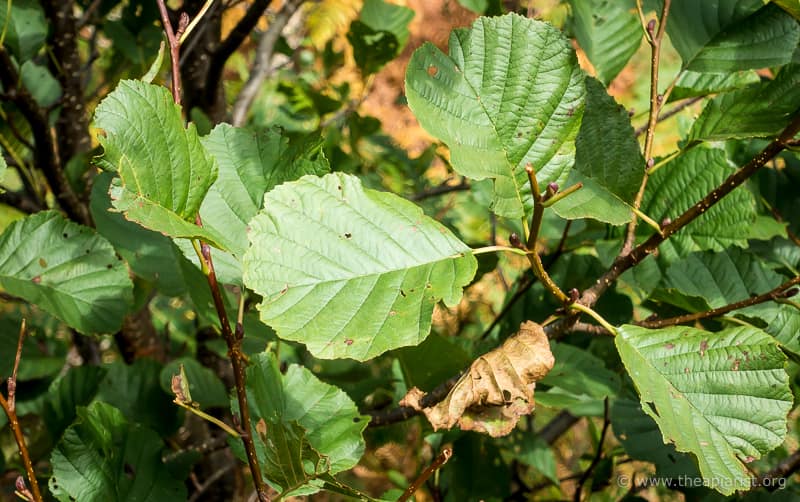
Alder
Alder, once established, seems reasonably resistant to browsing by deer, presumably because they find it relatively unpalatable. The long-term plan is to coppice the alder – it makes good firewood when properly dried. It has also historically been used to make clogs, but I’ll be cutting it back before it’s grown enough for anything but the tiniest feet.
Hazel
Like alder, hazel (Corylus avellana) is a good source of early season pollen. Most readers will be familiar with the catkins which appear as early as mid-February. The area shown in a picture (above), now cleared of rhododendron, has been planted with hazel. It’s a south-facing slope with thin soil but most seem to be doing OK so far.
There are a couple of mature hazel nearby and I managed to find a few seedlings which I transplanted, however the majority went in as bareroot whips.
Hazel is popular with deer and with the red squirrels. The fact I needed to buy barerooted trees probably reflects the fact that the squirrels get most of the nuts, and those that do germinate are then eaten by the deer. It’s a tough life.
Gean
Gean is the Scottish name for the wild cherry (Prunus avium) {{4}}. It flowers in April and is a great source of nectar and pollen for the bees. I’ve only planted a few of these, in scattered groups of three, or along the side of the track. Despite gean not really flourishing in acid, peaty soil they seem to have established well and are already approaching shoulder height. Gean, like rowan {{5}}, is also great for the birds and the thrushes will probably get the majority of the fruit that sets.
Poplar or aspen
Poplar or aspen (Populus tremula) is a favourite of mine. The leaves have pale undersides and are held on long, flattened petioles. As a consequence they flutter in the faintest of breezes and are a wonderful sight, particularly planted against a backdrop of dark brooding conifers.
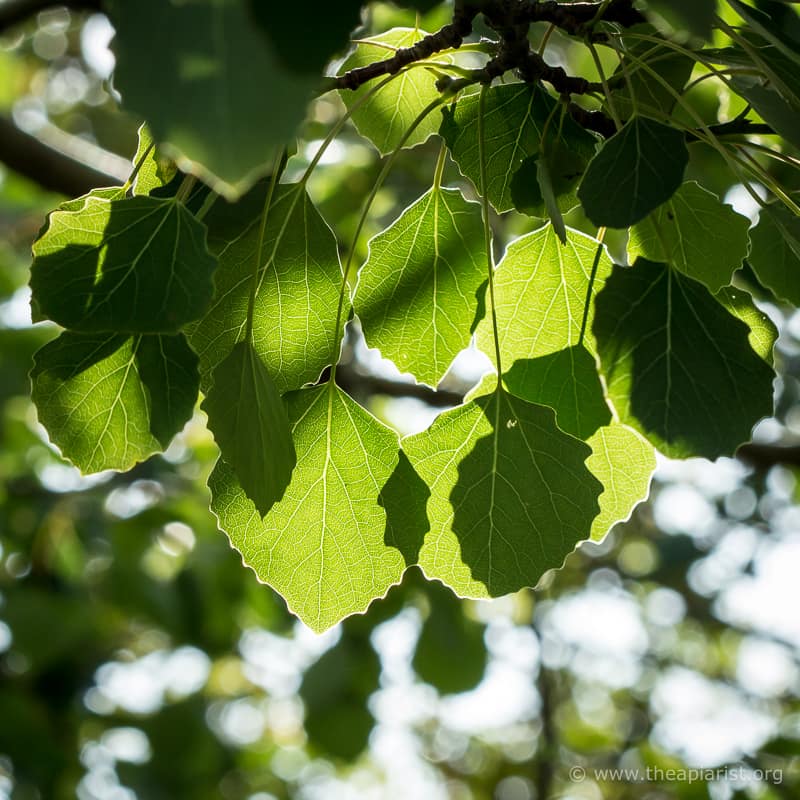
Poplar or aspen (Populus tremula)
In fact, poplar is so attractive I’d have planted it even if it was of no interest to the bees.
Poplar is wind pollinated and the bees probably only get a little pollen from it. Some species also produce early season sap that is a major component of propolis apparently. Finally, poplar are susceptible to a rust or fungus called Melampsora, and the bees collect the spores if they need protein and there’s no pollen to be found.
The standard way to propagate poplar is by root cuttings. There is relatively little poplar around here, and none I could have easily grubbed up the roots from. However, after a bit of searching I discovered Eadha Enterprises in Lochwinnoch, near Glasgow. Eadha is derived from the old gaelic word for aspen. They are a social enterprise specialising in aspen production from stocks of known provenance. The cell-grown saplings I received, which are going in this winter, are derived from trees on the Isle of Arran.
Willow
In contrast to the relative difficulty of propagating aspen, you have to try hard not to propagate willow. A foot long, pencil-thick cutting – taken more or less any time of the year – will root very quickly. Even if left in a bucket of water for a fortnight.
I’ve planted a lot of willow from local trees (probably goat willow, Salix caprea, but they hybridise so freely you can never be certain) and planted it in variously boggy bits of ground, alongside some of the alder. Willow is generally dioecious (male or female) and you need to plant male trees for the pollen. I planted some female as well as they both produce nectar.
In addition to just planting them directly, I grew a few on in tubs in potting compost. These developed good root systems and grew better.
However, willow is a favourite of deer and the cuttings I’ve planted have periodically been hammered by both red and roe deer.
Sabre planting and oversize cuttings
The obvious way to prevent deer damage is to build a 6 foot high fence but, because of the rocky nature of the ground, this is impractical (which is an easier way of saying eye-wateringly expensive).
If you visit the Scottish highlands you’ll be familiar with the site of small burns cascading down gulleys in the hillside. Often the the sides of the gulleys have dense growth of alder, birch or willow.
This is not just because of the nearby water supply. After all, much of the land receives 2000 mm of rain or more a year.
The other reason the trees are there (and not on the open moor) is that the gulley is steep sided and the trees therefore experience less grazing pressure. You can recapitulate this by so-called sabre planting {{6}}. In this you plant trees of 1m+ height perpendicular on slopes of at least 40°. The slope makes the growing tips less accessible and they gradually grow out and away, straightening up as they do.
I’ve only discovered this strategy recently {{7}} and will be trying it in a couple of locations.
An alternative strategy, particularly suitable for willow, is to plant ‘cuttings’ that are already too big for the deer to reach the growing tips.
To avoid grazing by red deer this means at least 1.5-1.8 m in height. The technique is almost the same as planting the foot long, pencil-thick cuttings … you just push them into the ground. It’s worth noting that you need to push them a good distance into the ground and stake them. About 50% of the big cuttings I’ve planted have apparently rooted. I’m pretty certain that those that didn’t failed because they were not staked firmly enough. This makes sense … as the leaves sprout they become wind-resistant and gales will quickly damage the developing root system through simple leverage.
Gimme Shelter
I’ve planted trees for bees before. We planted lots of goat willow and mixed hedging around our research apiary in Fife in early 2018. The combination of a major fire in my research institute the following year, and Covid this year, meant that the trees have been just left to get on with it.
And they have. This was a bare earth bank in February 2018. We still need a windbreak, but even that can probably be dispensed with in a year or so. Not all the trees have thrived, but I’m more than satisfied considering the neglect they received.
Oh deer
Scotland is overrun with deer. A review over 50 years ago stated that the optimum number of red deer the land could maintain was ~60,000. They defined ‘optimum’ in terms of avoiding agricultural damage, while allowing natural regeneration with no necessity for fencing. This would also ensure that there’s enough food for the deer during the winter months.
The current estimate is that there are over 450,000 red deer in Scotland. As a consequence there are many areas with no natural tree regeneration without installing expensive and intrusive fencing. In addition, the deer are often in lousy condition and/or starve to death in hard winters.
If you look carefully you can see a couple more coming down the track. There’s also a beehive in the video above, though it’s tricky to spot.
In addition to red deer we also have a smaller number of roe deer … equally attractive and almost equally destructive.
Don’t get me wrong, I love deer … particularly braised slowly with a good quality, full-bodied red and winter vegetables.
Not beekeeping?
OK, in terms of specifics, not beekeeping. However, I’d argue that beekeepers have a responsibility to maintain and protect their environment. This includes ensuring that their charges do not impact negatively on the native wildlife.
This area is towards the extreme north-west corner of the country and the introduction of a quarter of a million bees (~5 hives) will inevitably impact the pollen and nectar available for the established native pollinating insects.
I could choose to avoid the latter by ‘not beekeeping’, but I’ve instead chosen to try and improve the resources available in the environment. Time will tell if there is a shortage of pollen and if my bees thrive.
If they don’t, at least there will be a bit less bloody rhododendron 😉
Notes
If you’re interested in native trees I thoroughly recommend the Handbook of Scotland’s Trees by Reforesting Scotland. It has lots of good advice about collecting seed and planting, but also has details of uses for trees and folklore. Whilst it focuses on Scotland’s trees (the clue is in the title), most grow elsewhere as well, and it’s packed with information. If you are interested more generally in the history, uses and planting of woodlands it’s probably worth reading all 16,452 pages (a slight exaggeration, but it is a magnum opus) of Oliver Rackham’s Woodlands which is a masterpiece.
{{1}}: I see the first three on a near-daily basis, but have never seen a wildcat … I did say it was elusive.
{{2}}: For a recent review in this area try Mallinger et al., (2017) Do managed bees have negative effects on wild bees?: A systematic review of the literature. PLoS ONE 12: e0189268 … I’m also going to write about the related subject of pathogen ‘spillover’ from managed colonies to wild bees this winter.
{{3}}: A word borrowed from early Scandinavian – Danish kær or kjær, Swedish kærr – meaning fen or bog, now more usually applied to wet, boggy ground.
{{4}}: Confusingly this isn’t the bird or black cherry, which is Prunus padus. I’d tried and failed to source this one last winter but will try again.
{{5}}: I forgot to add rowan to the list of trees I’m planting. Rowan self seeds all over the place, but the deer love it. I’ve rescued some seedlings, grown them on in pots and planted them out with protection and they’re thriving.
{{6}}: Watson, S. 1998. Sabres in the hills. Tree News, Spring, 14-15.
{{7}}: In the excellent Handbook of Scottish Trees, see notes.
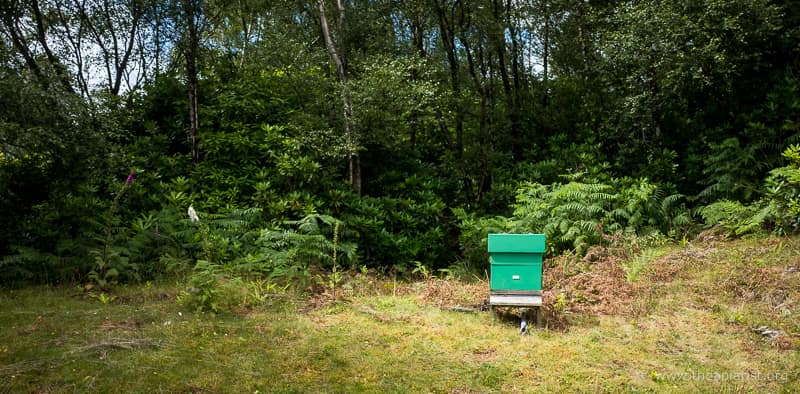
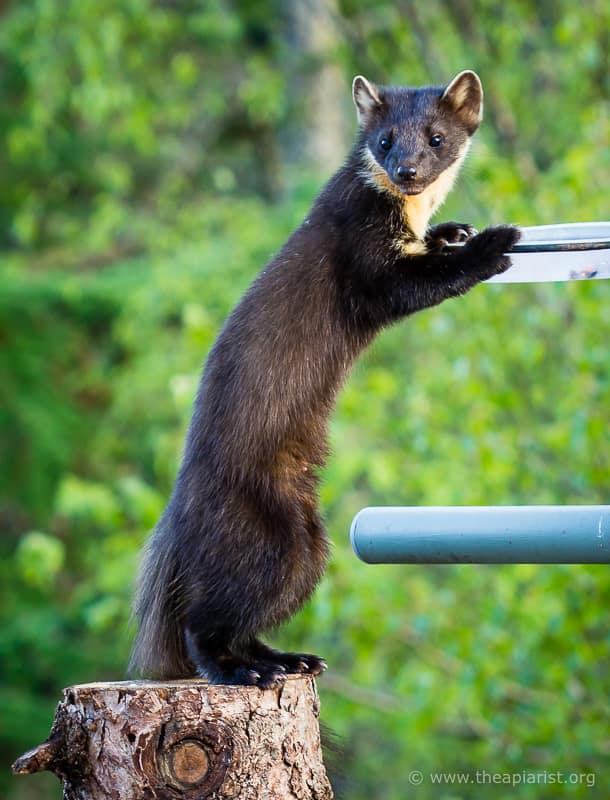
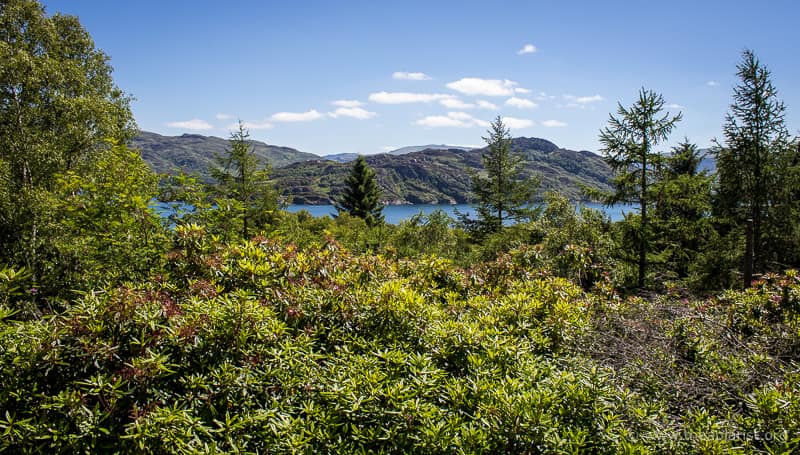
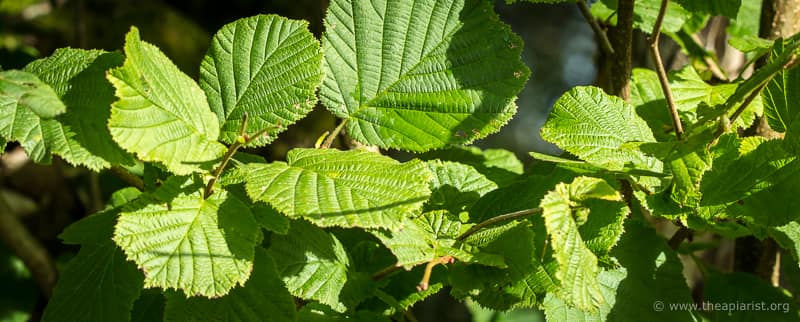
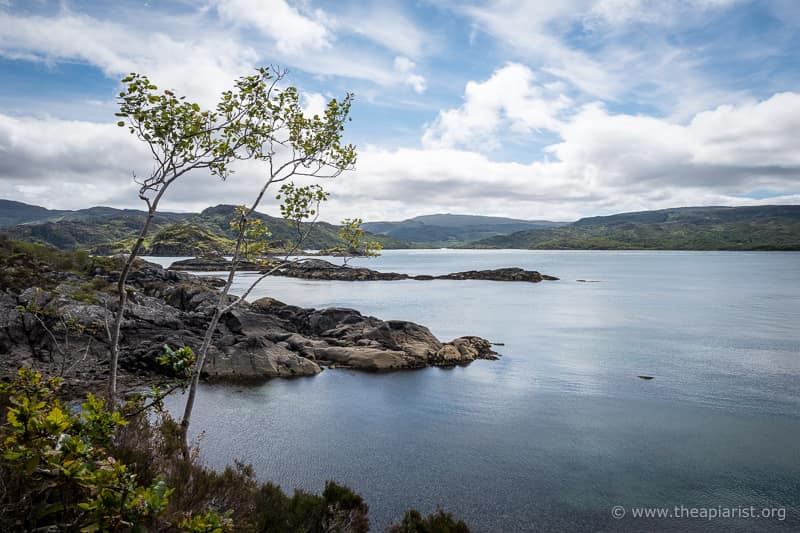
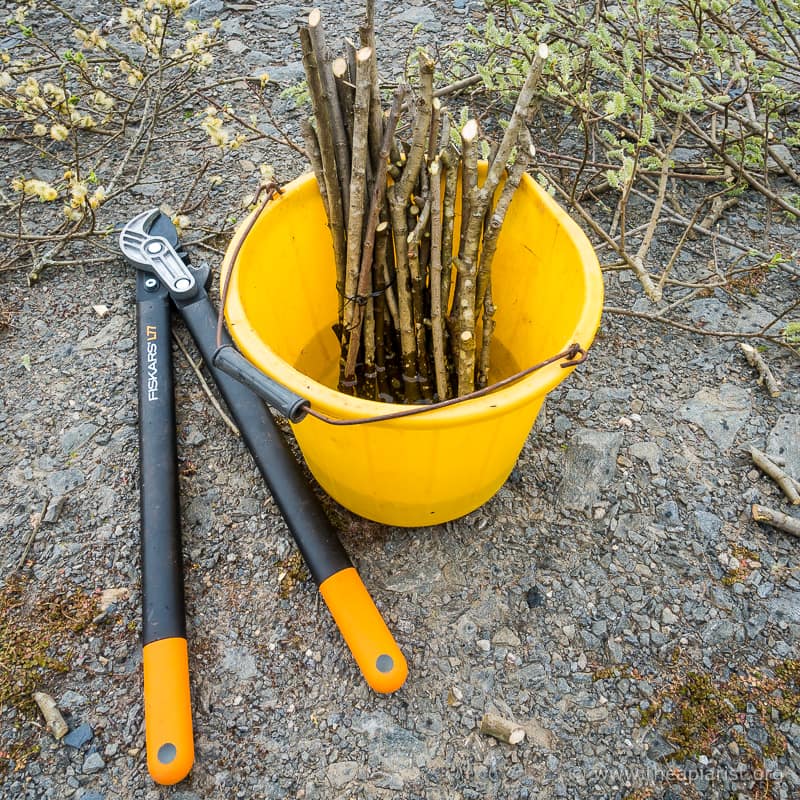
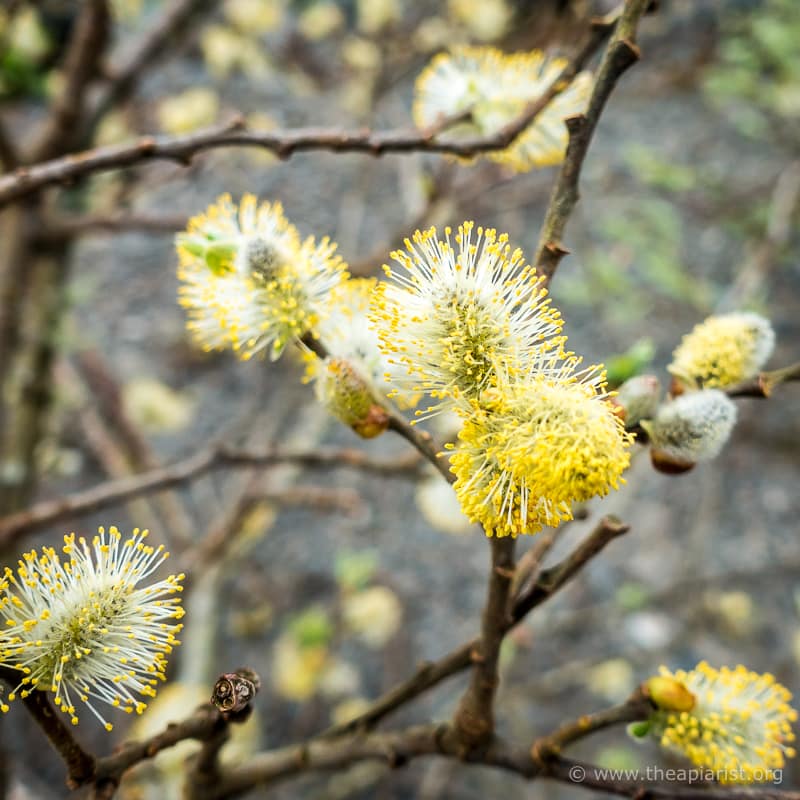
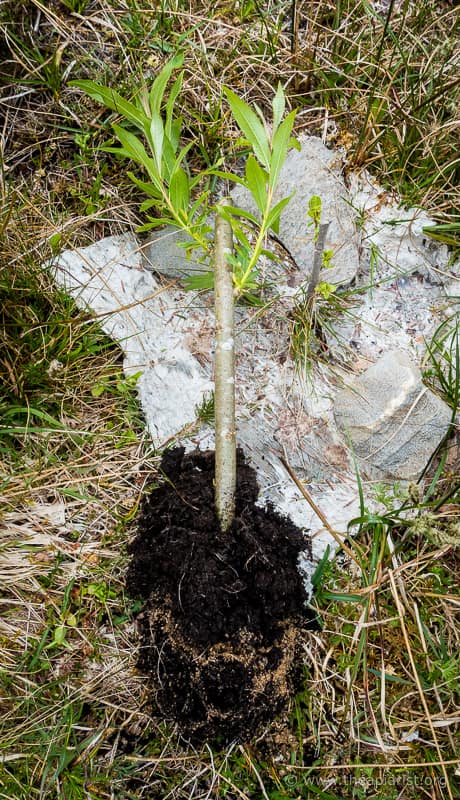
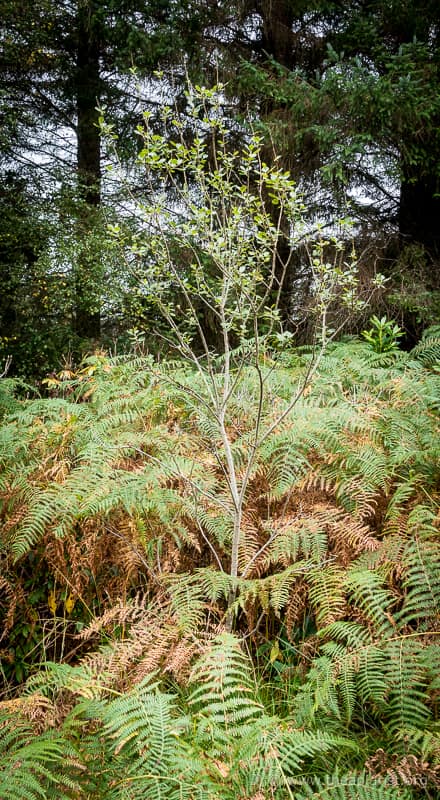
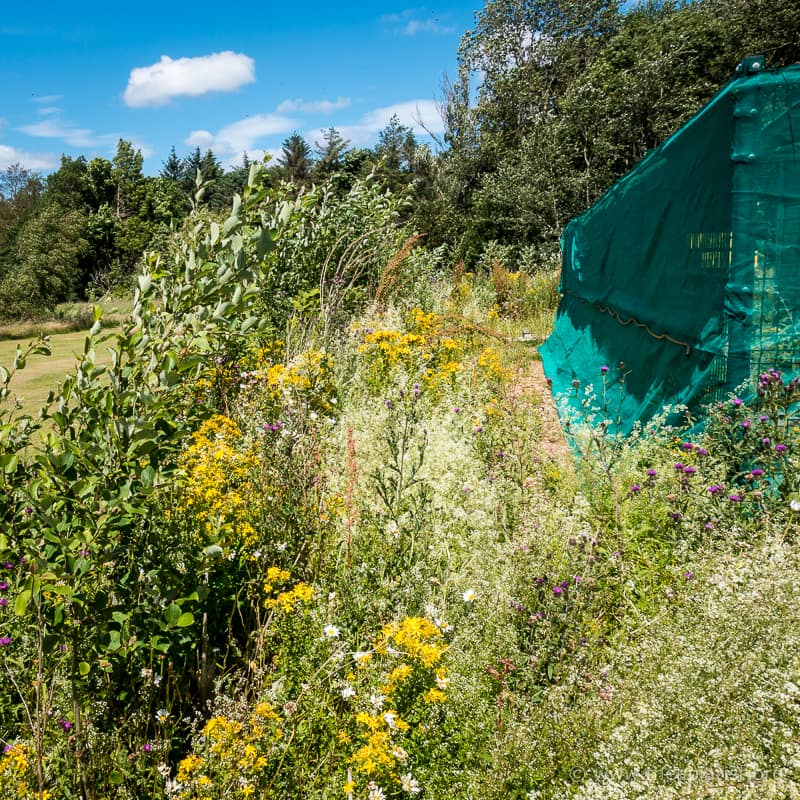
Join the discussion ...